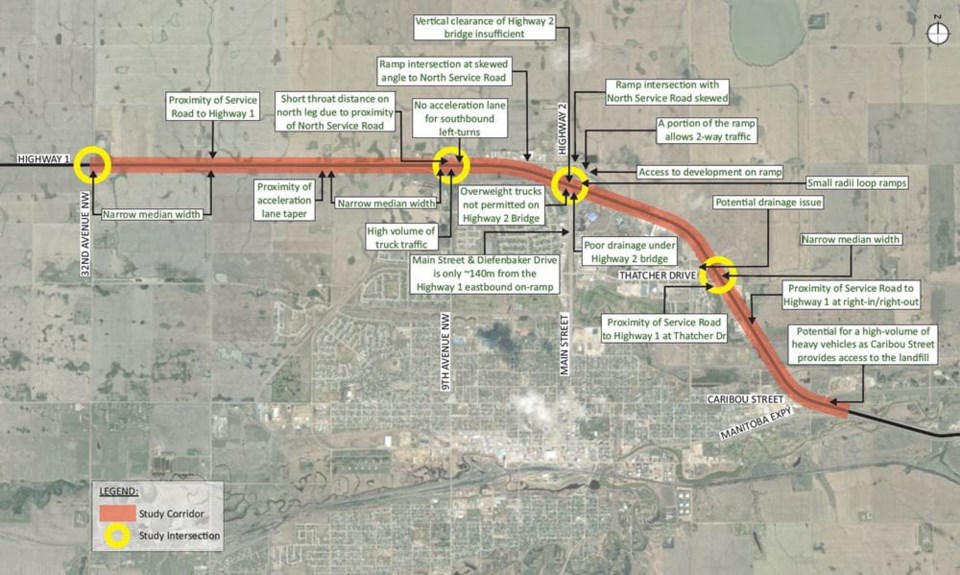The Ministry of Highways is planning a corridor study for Highway 1 through Moose Jaw that will focus on four main intersections and wants public feedback about the proposed upgrades.
The study will address safety concerns along the Trans-Canada Highway where it intersects with 32nd Avenue Northwest, Ninth Avenue Northwest, Highway 2 and Thatcher Drive East.
“Highway 1 through Moose Jaw is an important part of the national highway system, (however), increasing traffic is straining the capacity of several key intersections,” the ministry said. “Changes are needed to improve safety and capacity. Any improvements must consider safety, limited space and maintaining access to local businesses.”
The project’s goals include developing a plan to improve safety and traffic flow, identifying solutions at the main intersections and determining how to reconfigure the Highway 2 interchange.
Click here to complete the survey.
Click here to see the preliminary options.
32nd Avenue Northwest
A long-term solution is required to address future development near the intersection of 32nd Avenue Northwest, the study says. In the last five years, there has been one property damage incident and one non-fatal injury collision; the intersection sees roughly 6,350 vehicles per day.
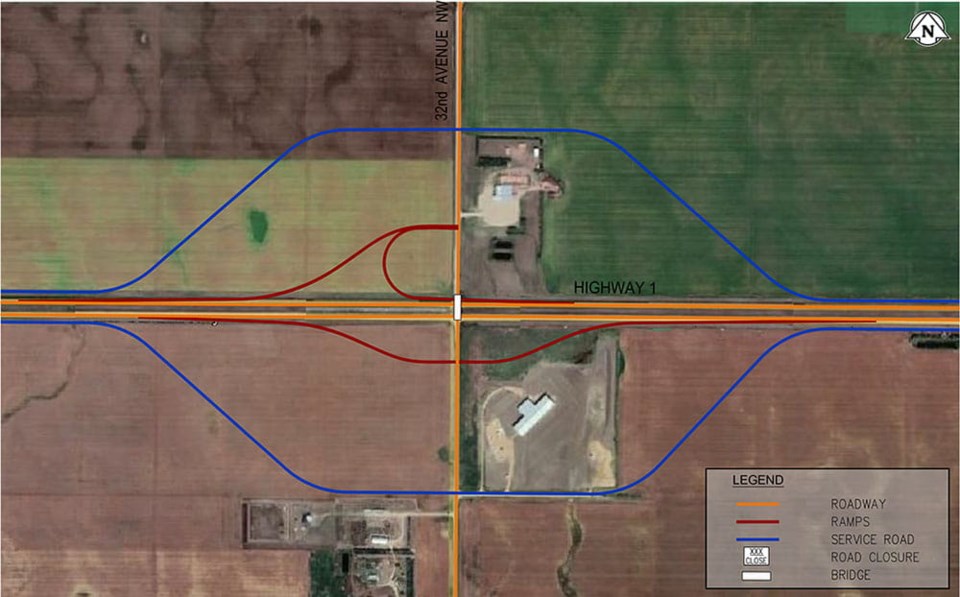
One option is a partial cloverleaf (above picture) that would use ramps to avoid existing developments and have the avenue cross the highway with an overpass, with traffic entering and exiting Highway 1 using ramps.
This option would cost $45 million to $55 million.
Ninth Avenue Northwest
There are safety concerns with traffic crossing Highway 1 and the proximity of the North Service Road, the ministry said. In the last five years, there have been nine property damage incidents and 10 non-fatal collisions; the intersection averages 5,650 vehicles per day.
One option is to have a right-in, right-out intersection (below picture), eliminating left turns in any direction and preventing traffic on Ninth Avenue NW from crossing the highway. This would improve safety by erasing conflict points and preventing severe T-bone collisions.
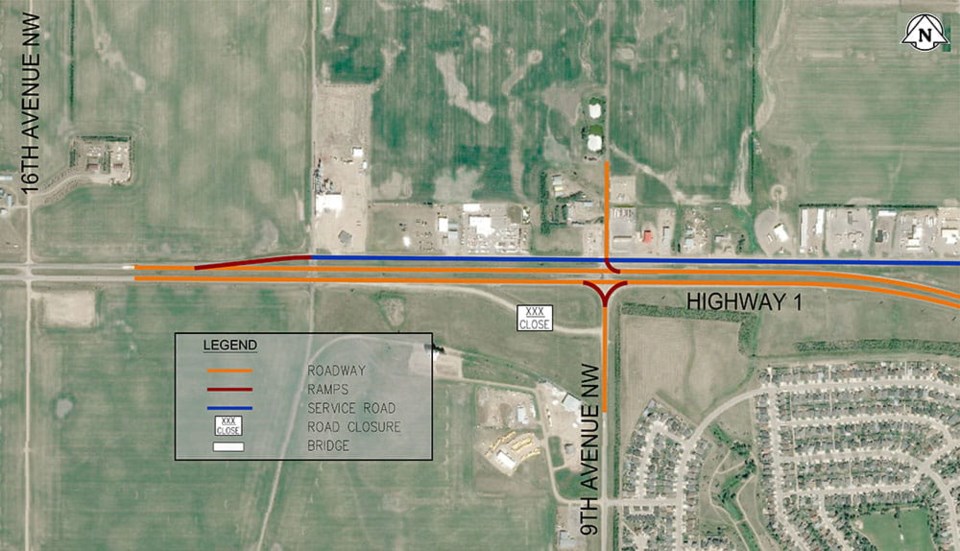
This option would cost less than $1 million.
Option 2 would install traffic signals (below picture), which would eliminate the free flow of traffic on Highway 1 and require speeds lowered to 70 km/h from 80 km/h. Furthermore, Highway 1 would have to shift further south to provide more space between that road and the North Service Road.
“Traffic signals reduce left turn and T-bone crashes, but increase rear-end collisions,” the ministry said.
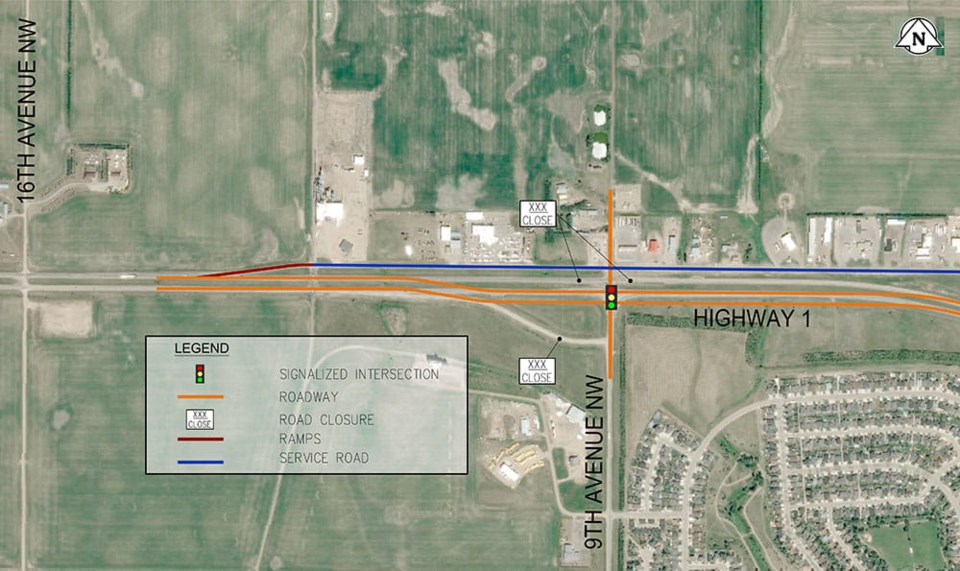
The option could cost $8 million to $12 million.
Option 3 would install a two-lane roundabout (picture below), which would require speeds to be reduced to 60 km/h from 80 km/h on the approach and then 30 km/h through the roundabout.
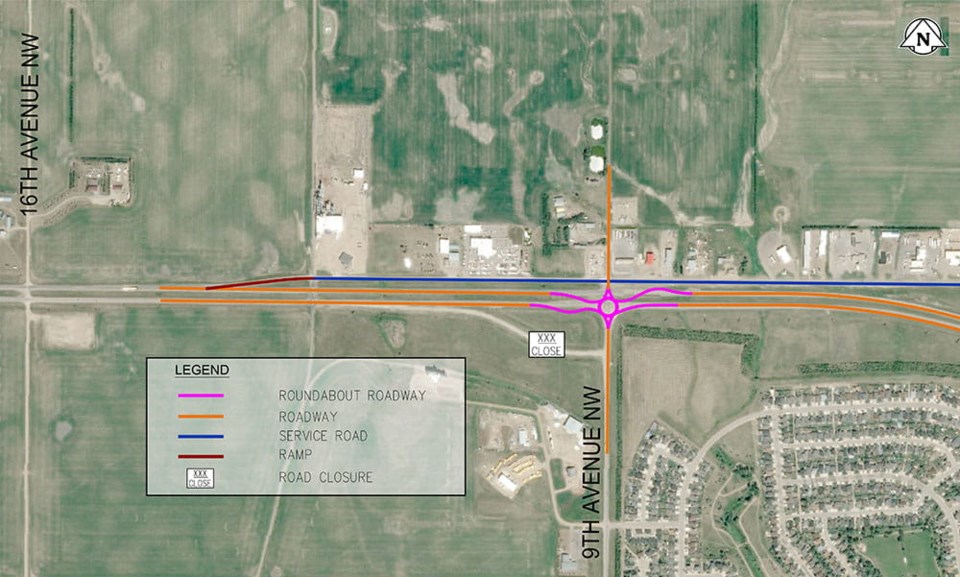
This option would cost $2 million to $4 million.
Option 4 is to build a partial cloverleaf over the highway (picture below), with traffic entering and exiting using ramps and a bridge over the rail crossing to the west, keeping Highway 1 traffic free-flowing.
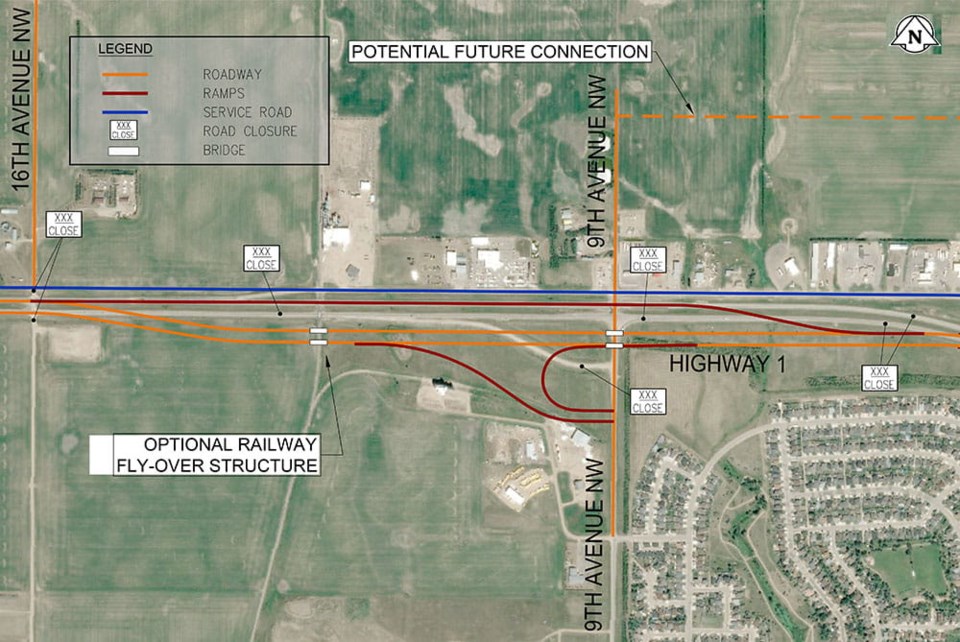
This option could cost $45 million to $55 million.
Highway 2/Main Street
The Highway 2/Main Street bridge does not provide enough clearance for large trucks and the interchange needs to be reconfigured, the ministry said.
In the last five years, there has been one property damage incident and 11 non-fatal injury collisions; the interchange averages 7,750 vehicles per day on Highway 1 and 6,050 vehicles per day on Highway 2.
Option 1 is to install a diamond interchange (picture below), which would minimize property damage to the bridge. It would have appropriate clearance for large trucks, while traffic would enter and exit Highway 1 using ramps.
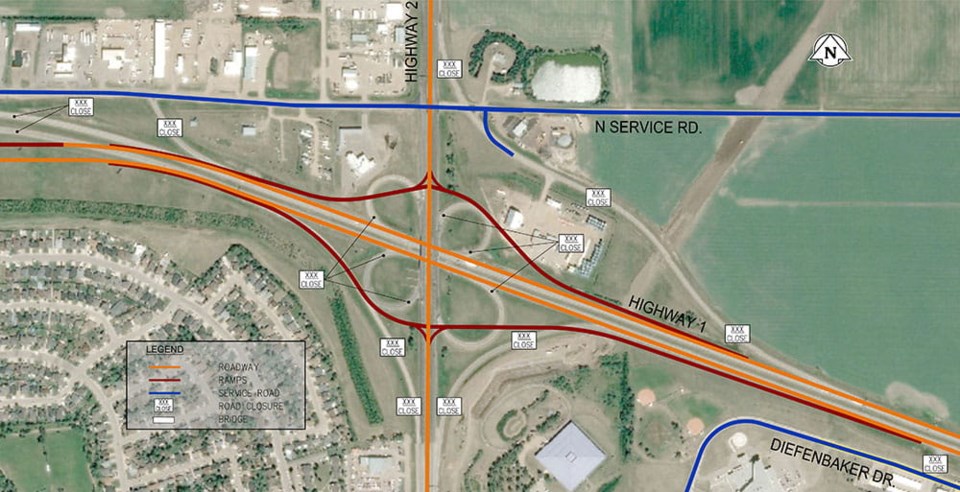
This could cost $45 million to $55 million.
Thatcher Drive East
The ministry has heard of safety concerns with traffic crossing Highway 1 at Thatcher Drive East. It noted that in the last five years, there have been six property damage incidents and one non-fatal injury collision; the intersection averages 9,000 vehicles per day.
Option 1 is to install traffic signals (picture below), although they would eliminate the free flow of traffic through Moose Jaw. Traffic signals would require speeds lowered to 70 km/h from 100 km/h.
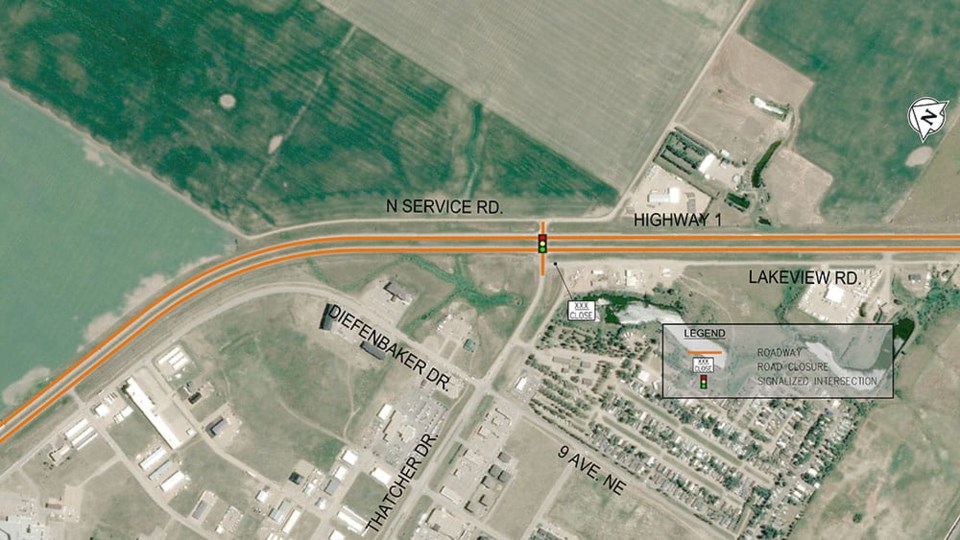
“Traffic signals reduce left turn and T-bone collisions but increase rear-end collisions,” the ministry said.
This option could cost $750,000 to $1.5 million.
Option 2 is to install a two-lane roundabout (picture below) that would require a speed reduction to 60 km/h from 100 km/h on the approach and a recommended speed through the roundabout of 30 km/h.
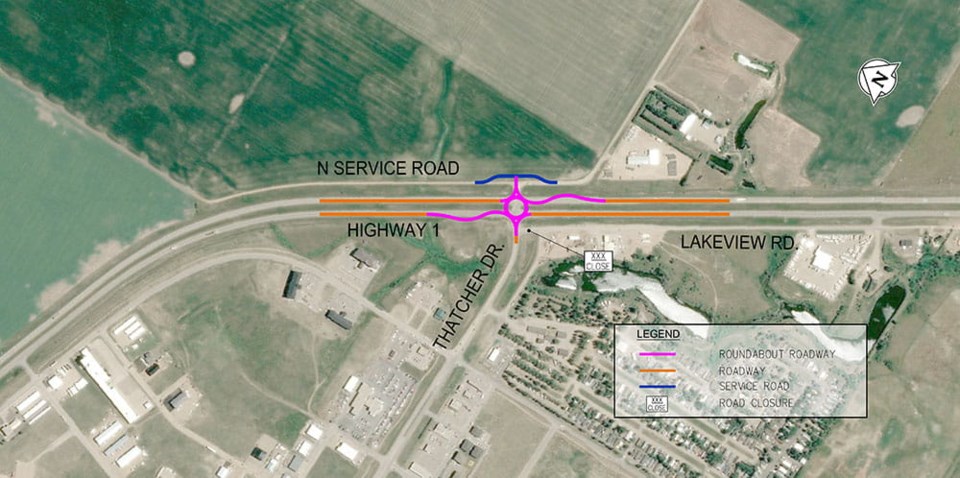
This option could cost $2 million to $4 million.
Option 3 would install a diamond interchange (picture below) that requires an overpass, with traffic entering and exiting using ramps.
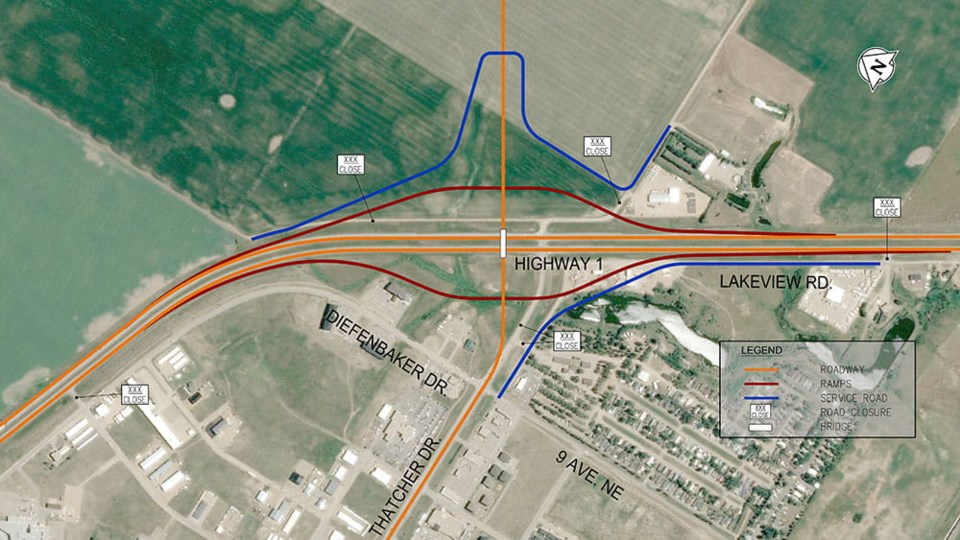
This option could cost $45 million to $55 million.
